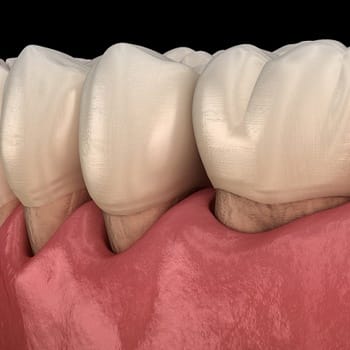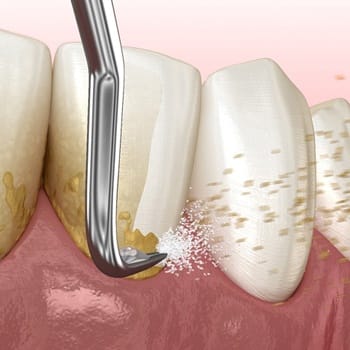Tackling Gum Disease Before It Causes Permanent Damage
It can be easy to get behind on professional dental cleanings and checkups when it feels like you don’t have enough time in your day to get everything done that you need to. That’s why countless American adults experience signs of gum disease, such as inflammation, swelling, and bleeding gums when you brush and floss. At Shwarts Family Dentistry in Dallas, we strive to catch these symptoms early so we can stop them from causing permanent damage to your mouth. We’re often able to do this with gum disease treatment in Dallas, such as scaling and root planing, also known as a deep cleaning. If you’ve been experiencing any symptoms of gum disease, contact our office today to learn how we can tackle the issue immediately.

Why Choose Shwarts Family Dentistry in Dallas For Scaling & Root Planing?

WHEN IS SCALING & ROOT PLANING RECOMMENDED?
If it has been awhile since you last had a routine checkup and cleaning, our team may notice some of the early signs of gum disease while examining your mouth. In these cases, we may recommend a deep cleaning in Dallas. It’s a non-surgical treatment that allows us to clear bacteria, plaque, and food debris from your mouth to help restore your oral health.
Gum tissue is meant to snuggly fit around each of your teeth, keeping bacteria from having access to the roots and other vulnerable areas of your mouth. When your gums are infected, they’ll begin to recede from your teeth, causing permanent damage like tooth loss if the issue isn’t addressed. Scaling and root planing helps combat this problem and reattach your gums to your teeth, keeping the symptoms of gum disease from getting worse.
WHAT HAPPENS DURING THE PROCEDURE?
The process of scaling and root planing typically takes place over two appointments because it’s important to be incredibly thorough and leave no bacteria or tartar behind. During your first visit, one of our expert dental hygienists will use a scaler to remove all plaque, bacterial toxins, and tartar from the surface of your teeth and along your gumline and roots. We’ll be sure to clean between every nook and cranny to make sure that your gums have a chance to heal. Your last appointment will consist of us smoothing out the surface of your roots to keep bacteria, plaque, and tartar from re-attaching below your gumline. This will give your gums a chance to reattach to your teeth, protecting them from further harm.


CARING FOR YOUR MOUTH AFTER THE PROCEDURE
After your procedure, you may experience some tenderness and soreness while your gums heal and reattach to your teeth. It’s important to make sure that your mouth remains plaque and tartar-free to keep harmful oral bacteria accumulation to a minimum. This will give your mouth a better chance of healing. Here are some tips to help prevent bacteria from re-infecting your gums:
- Brush twice each day using fluoride toothpaste.
- Floss at least once every day.
- Replace your toothbrush every three months or when the bristles appear worn-down.
- Rinse with antibacterial mouthwash daily.
- Break habits such as nail-biting and smoking.
- Visit Dr. Shwarts every six months for your checkup and cleaning.
With the proper preventive measures in place, you will be able to protect your teeth and gums from further damage so you can enjoy your natural smile for years to come.

